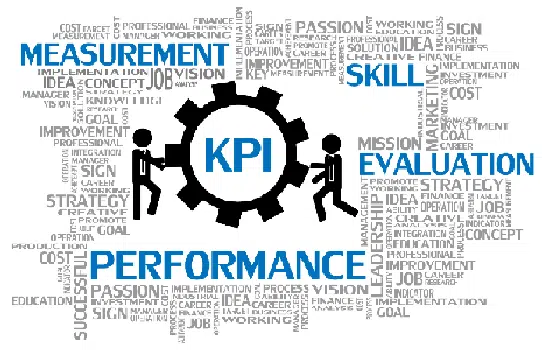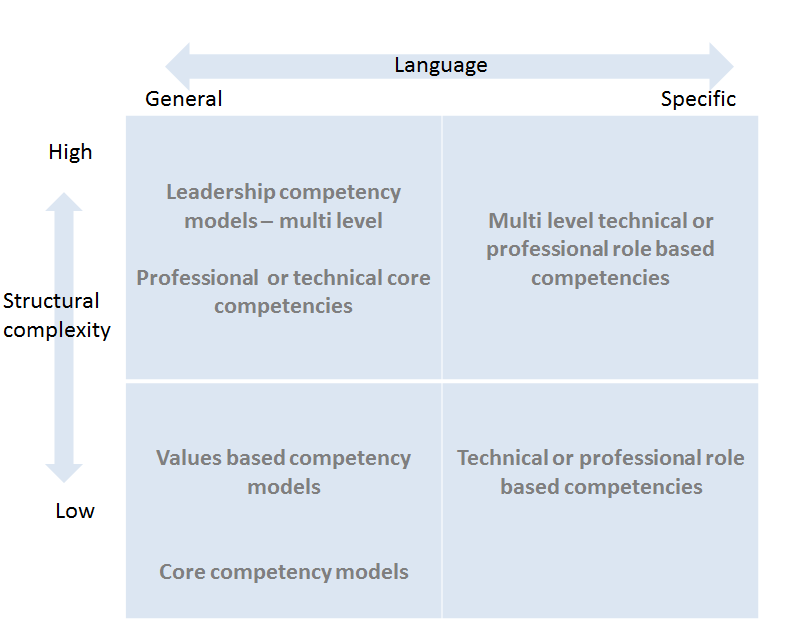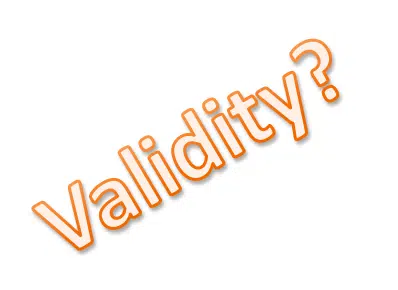
What is a Competency Model?
and how to design one
A competency model is an organization’s blueprint of role-critical knowledge, skills and behaviours. This guide explains core, leadership and functional competency types, with key components and job-analysis steps to build custom models. It shows how AI tools, validation and ongoing assessment turn the framework into measurable performance, development and succession gains.
Definitions
A competency is the ability to use a set of relevant knowledge, skills, and abilities to successfully perform “critical work functions” or tasks in a defined work setting.
Competency Modeling definition – A competency model (or competency framework) is a set of competencies – a blue print for success. It may apply to ;
- ☑️ all staff in the organization
- ☑️ a level of leadership
- ☑️ a job role – job competency model
- ☑️ a business function
- ☑️ a professional discipline
- ☑️ a particular job task
How do Competency-Based HR Systems support business success?
Competency-based HR systems can revolutionize how an organization manages its human resources. They offer a variety of applications tailored to meet specific HR needs:
- 🔷Performance Management: These systems facilitate setting clear expectations and measuring employee performance against predefined competencies, ensuring alignment with organizational goals.
- 🔷Assessment and Selection: By identifying key competencies required for each role, HR can design more effective recruitment and selection processes, improving the accuracy and reliability of hiring decisions.
- 🔷Succession Planning and Management: Competency-based tools help in identifying and nurturing talent within the organization, ensuring readiness for future leadership roles and minimizing disruption caused by leadership changes.
- 🔷Training and Development: They pinpoint skill gaps and guide the development of personalized learning paths, ensuring employees develop the competencies necessary for their current roles and future growth.
- 🔷Workforce Management: These systems offer insights for strategic workforce decisions, such as restructuring, upskilling, downsizing, or the integration processes during mergers, by suggesting optimal allocation and development of talent.
In essence, competency-based HR systems simplify and enhance various HR functions, leading to a more efficient, prepared, and adaptable workforce.
Competency Types
There are different kinds of competency.
Many organizations have a set of core values – principles that guide the way they operate. These are translated to values based behaviors that all staff should demonstrate as they go about their work. For example in healthcare ‘compassion’ is a common value.
🟡 Values based Behaviours – Empathy in Healthcare, and the soft skills that help people work together, and support the organization, such as communication and teamwork.
🟡 Core competencies today are those that will sustain the organization into the future – digital literacy, critical thinking
🟡 Leadership competency sets may vary by leadership level.
🟡 Functional competencies are directly related to job roles and activities.
What are the components of a competency model
- Competency Names and Definitions
Values, Core and Leadership competency models typically include
- Competency names along with detailed definitions. For example, a competency like “Teamwork” might be defined as establishing solid interpersonal relationships, treating others with courtesy, sharing knowledge and collaborating to solve problems and achieve goals.
- Behavioral Descriptions: Each competency is often associated with specific behaviors or activities which illustrate practical applications of the competencies in your organization’s environment.
- Visual Diagram A visually appealing diagram can be used to help users quickly understand its key features
Functional Competencies
Functional competencies support job specific activities – so they may cover
- a function like Human Resources
- A set of technical competencies – i.e. website design
- a set of clinical competencies – for example for Acute Care Nursing
🔷 Structure
Depending on the complexity of work within the organization, functional—technical/clinical competencies may have subheadings, each with indicators or standards. The subheadings may be specialisations of the competency – for example — or subheadings like Knowledge & Skills. In this kind of model indicators or standards are task rather than ‘behavior’ based, and may include key steps in the task.
For functional competencies, the structure of the competency model or framework will depend on how competency assessments are to be conducted. The model may include multiple competencies, with only a few mapped to a particular job role.
The competency description may include a guide for how it should be assessed.
🔷 Model Flexibility and Language
The language in the competency model should match its purpose. For values-based, core, and leadership competencies, simple language using concepts contributing to organizational effectiveness is ideal. For technical or professional role-based competencies, language specific to your organization’s processes, tasks, and equipment is crucial.
🔷 Additional Information on Proficiency Levels
Some models include information in their sets of indicators of requirements for different levels of proficiency. This may be on the basis of levels such as entry, intermediate, mastery and expert. Proficiency levels may also reflect the activities required at various levels of occupational seniority, providing a comprehensive framework that aligns with role-specific requirements.
What is the purpose of a competency model?
The purpose of a competency model is two fold. On the one hand it communicates what is expected of staff, how they should do their job. On the other it is used as a benchmark to ensure people have the skills they need for success.
Competency based models are used across all people management practices including;
☑️ recruitment and selection
☑️ on boarding
☑️ performance management
☑️ training
☑️ career development
☑️ talent pool development
☑️ succession planning
- ☑️workforce planning
Key Considerations for Developing Competency Models
Embarking on the journey of developing competency models necessitates a thoughtful approach, one that addresses several practical questions critical to the project’s success. Here are some fundamental considerations to ponder before proceeding:
🔵 Identify Initial HR Applications: Start by determining which Human Resources applications should be incorporated from the outset. This could include anything from recruitment and performance evaluations to training and development. The chosen applications will shape the competency model’s scope and functionality.
🔵 Understand User Needs: Pinpoint the specific needs of the job competency model’s primary users. Consider what tools or insights these users require to enhance their operational effectiveness. A clear understanding ensures the model remains user-centered and relevant.
🔵 Engage Key Stakeholders: Decide on the extent and manner of stakeholder involvement. Facilitate collaboration with leaders, managers, and team members to gather diverse insights and foster buy-in. It’s crucial for smooth implementation and future support.
🔵 Scope Data Collection: Determine how comprehensive your data collection process should be. This might involve surveys, interviews, or workshops. Balancing the depth of data with available resources and time is vital for creating a reliable model without overstretching the project’s reach.
🔵 Blend Research and Intuition: Contemplate how to merge empirical research with intuitive insights. While data provides a solid foundation, intuition often reveals nuanced understandings. Striking a healthy balance can lead to a competency model that’s both robust and adaptable.
🔵 Choose Descriptor Formats: Decide on the most effective format for behavioral descriptors. Whether opting for bullet points, narrative descriptions, or a hybrid approach, ensure the format aligns with the HR applications and is easily interpretable by users.
🔵 Plan for Future Models: Consider how the framework can adapt to accommodate additional competency models in the future. This foresight enables scalability and ensures the long-term relevance of your initiative.
By carefully addressing these questions, you lay the groundwork for a competency model that meets immediate needs while offering flexibility for future growth.
Competency-Modeling Using Job Analysis
Organizations aiming to implement competency-modeling often face challenges like limited resources or budget constraints. However, several alternative methods can streamline the process, ensuring that competency models are both effective and comprehensive.
1. Focus Group Resource Panels
One effective approach involves forming focus group resource panels, also known as expert panels. These panels typically comprise seasoned professionals who can provide valuable insights into the specific competencies required for various roles. By leveraging the collective wisdom of these experts, organizations can build robust competency models tailored to their needs. This method is often enhanced by using templates for different job roles, which can accelerate the process.
2. Job Task Analysis Interviews
Another viable method for competency-modeling is through job task analysis interviews. This approach involves conducting detailed interviews with employees to understand the nuances of their daily tasks and responsibilities. By analyzing this information, it’s possible to identify critical competencies that align with job requirements. This method allows for a deeper understanding of the specific skills needed, which can then be integrated into a competency model.
3. Virtual Resource Panels with Surveys
In today’s digital age, virtual resource panels offer a convenient and efficient way to gather data. This method uses web-based surveys to collect both qualitative and quantitative data about job roles. Participants, including jobholders, managers, and other knowledgeable individuals, provide insights through open-ended questions and ratings. The collected data is then analyzed to draft a competency model. This method is particularly beneficial for remote or geographically diverse teams.
By utilizing these alternative methods, organizations can develop comprehensive competency models that accurately reflect the competencies required for success in various roles, despite any limitations they may face.


Competency Model Development Strategies
The structure of a competency model will depend on the competency type and purpose. There should be a competency model or framework for each set of competencies. One for the core values, another for core competencies, a leadership competency model, and multiple competency models for job-specific competencies.
Identifying Superior Performers
The development process begins with identifying superior performers within the organization. These individuals exemplify effective performance and provide a benchmark for determining the skills, knowledge, and personal characteristics necessary for success in a specific role.
Data Collection Methods
To gain a comprehensive understanding, data collection methods such as behavioral event interviews and expert panels are employed. These methods delve beyond mere opinions, capturing the nuanced qualities that make these performers stand out.
Competency Model Structure by type and purpose
Competency models addressing organizational values, core competencies, and leadership competencies should have no more than 5-7 competencies. If there are too many, assessments become less accurate as reviewers may lose focus.
For values-based competencies, which communicate the required approach, the competencies may simply include a description of desired behaviors (indicators or standards) and a rating scale. If more detailed assessment is required, the competency may list a maximum of 4-5 behaviors with their own rating scale.
Core competencies and leadership competencies will normally have separately rated behaviors, providing clarity and specificity in evaluation.
Functional Competency Models
Care is needed to ensure that the right information is collected – there is a trade off between simple models for ease of use and the more complex models that provide less ambiguity in evaluation and rich, more granular information for decision making
For functional competencies the structure of the competency model or framework will depend on how competency assessments are to be done. The model may have multiple competencies with only a few mapped to a role specific competency requirement profile.
The language in the competency model should match its purpose. For values based, core and leadership competencies the language will be simple using concepts that research shows contribute to organizational effectiveness. For technical or professional role based competencies the language will be specific to the particular processes, tasks, and equipment.

Competency models must cover both the current knowledge and skill requirements and those that are going to be needed in the future.
It is important to identify all the stakeholders – the individual staff, their managers, their departments and all those people they interact with, as well as those who decide on organizational objectives, direction and new initiatives. All will have diffeent needs and perspectives.
Who should be involved in creating a competency model?
The wording must be relevant to staff in their day to day jobs and they should have the opportunity to provide feedback.
For functional competencies the use of subject matter experts is recommended. Senior members of staff who can identify the critical tasks in roles they are familiar with and the knowledge and skills needed for success. They will most likely need some help in writing the competency.
Why Competency Models Should Reflect Each Organization's Unique Reality
Competency models serve as blueprints for elevating workforce performance and aligning it with organizational goals.
- Diverse Cultures and Environments: Organizations operate in distinct cultural and operational contexts. What drives success in one may not translate to another. For instance, Google and Tesla thrive on innovation, yet their approaches to fostering creativity differ vastly due to their unique corporate cultures.
- Industry-Specific Needs: Industries have varied demands that necessitate specific skill sets. A tech company may value agility and innovation, while a financial institution might prioritize precision and risk management. Catering to these industry-specific requirements ensures competencies resonate and drive performance.
- Organizational Goals and Strategies: Each organization has its own mission and strategic objectives. A competency model aligned with these goals ensures that employee development directly supports the company’s purpose and vision, amplifying overall effectiveness.
- Dynamic Workforce Needs: As organizations evolve, so do their workforce needs. A tailored competency model allows businesses to adapt quickly, incorporating emerging skills and trends that are crucial for staying competitive.
- Enhancing Employee Engagement: When competency models are relatable and reflective of the actual work environment, employees see their purpose more clearly. This relatability fosters greater engagement, as employees perceive their growth as directly linked to organizational success.
By designing competency models that reflect the distinctive attributes of each organization, businesses can truly harness the potential of their workforce, driving both individual and collective success.
Comprehensive Methodology for Building Competency Models
6 Key steps
Creating effective competency models involves a systematic approach to ensure clarity, consistency, and alignment with organizational goals. Here’s a step-by-step guide, enriched with insights on defining competencies:
- Initiate the Project:
- Assess the Need: Begin by thoroughly understanding the purpose and necessity of the competency model.
- Engage Stakeholders: Discuss and clarify the need with key stakeholders, including sponsors, to ensure alignment and support.
- Develop an Approach: Formulate a strategy that outlines how the competency model will be constructed and implemented.
- Secure Support: Gain the endorsement of sponsors to advance the project with confidence.
- Define Key Competencies:
- Unambiguous Wording: Competency descriptions must be clear, observable, and measurable to minimize interpretation and bias.
- Decide on Competency Headings:
- Choose a heading that encapsulates the competency. For instance, within a Leadership Framework, you might select ‘Relationship Building’.
- Functional competency frameworks, like Project Management, might use a top-level competency such as ‘Manage Stakeholder Relationships’ with subsequent subheadings.
- Establish Subheadings:
- Particularly useful for functional frameworks, these subheadings provide more detailed competency areas, such as:
- Identify and address stakeholder interests
- Manage stakeholder communications
- Manage team performance
- Facilitate external stakeholder participation
- Particularly useful for functional frameworks, these subheadings provide more detailed competency areas, such as:

5. Compose Descriptions:
-
- If no subheadings exist, write a general description of the competency. Otherwise, craft descriptions for each subheading.
- Example: Relationship Building – The ability and enthusiasm to identify and initiate working relationships, develop and maintain them for mutual benefit to support the organization.
6. Identify Measurable Standards:
- For each competency or subheading, set clear, observable standards. For example:
- Identifies internal and external professional working relationships that will support job and organizational goals
- Develops working relationships by proactively ascertaining needs and negotiating mutual benefits
- Puts aside emotive personal opinions that could adversely affect working relationships
- Demonstrates professionalism with logical problem-solving and evidence-based judgments.
Standards should start with a verb, focusing on observable actions. Avoid vague adjectives and adverbs, such as ‘good’, ‘appropriate’, or ‘promptly’. Instead, specify what these terms mean in practical terms. Minimize the number of words. Keep statements clear, simple and unambiguous.
By following these steps, organizations can create competency models that are not only clear and actionable but also aligned with broader strategic objectives. This structured approach ensures that competencies are defined in a way that supports consistent assessment and development.
How to validate competency models
HR processes such as competency evaluation must be legally defensible.
Competency models must be reliable and valid.
Reliability means that the assessment must produce the same results when used repeatedly over time – if the assessee has retained the same level of proficiency – or is assessed by several people independently. Competency models with context specific unambiguous language are more reliable.
There are various kinds of validity – they key ones to consider are
Construct validity – does the name of the competency represent an activity that is demonstrably important to the success of your organization. Do any subheadings fit ontologically
Content validity – are the components of the competency a complete compilation of what is needed to measuring this construct in your operating environment.

Face validity – does the audience for your competency model consider it to be relevant and suitable
Criterion or predictive validity – do the results of evaluations using the competency model produce the same results as other methods – for example performance evaluations (though it should be said these are notoriusly problematic).
The validity of competency models is an ongoing process of soliciting feedback from stakeholders – reviewing the feedback and updating the models as needed. In today’s fast changing environment models shoulkd be reviewed annually.
How and when should competency models be used?
How and when should competency models be used?
Competency models for values-based behaviors and core competencies are often used as part of performance management systems. These competencies may be assessed annually by staff and their managers. There is a recent trend to include 360-degree feedback from colleagues – but there are some potential downsides to this.
- Colleagues will not rate accurately when assessments are linked to compensation decisions.
- Assessments are likely to reflect the relationship as much as the competency being rated.
- Not all colleagues will be in a position to rate or comment on all the competency standards.
For functional competencies, an annual or biannual assessment is the norm. There are a number of ways to achieve this depending on the competency framework:
- Knowledge tests for assessing understanding and knowledge of principles and rules.
- Assessment by an expert or several experts.
- Self-assessment moderated by an expert or manager.
To successfully implement competency models within an organization, it’s crucial to approach it as an organizational change initiative. This involves several deliberate steps to ensure buy-in and effective integration:
- Develop a Business Case: Clearly articulate the value and purpose of competency models to align them with organizational goals.
- Select Initial Positions: Identify the first positions for which competency models will be developed, ensuring they are pivotal to the organization’s success.
- Engage Stakeholders: Identify and plan for the stakeholders involved in these initial models, crafting a strategy to influence and involve them effectively.
- Establish a Communication Plan: Develop a robust plan to communicate the development and implementation of competencies, ensuring transparency and understanding throughout the organization.
- Determine Data Gathering Approaches: Decide on the methods for collecting relevant data for the first positions, including who will participate in this process.
- Offer Ongoing Support: Provide continuous coaching and support as the organization progresses in developing and implementing competency models.
Assessments can be supported by the provision of evidence of competence—such as case examples or images—to reinforce the evaluation process. By integrating these strategic steps with the assessment methodologies outlined, organizations can effectively implement and utilize competency models to enhance performance and drive success.
Using AI for competency modelling
If you are not sure where to start on competency modelling then AI may be a perfect resource. You can input your industry, your job titles and key responsibilities and ask for the out put you’d like in terms of competency headings, subheadings, and indicators. You can ask for indicators at various proficiency levels.
Centranum offers this facility with items you select added to your own competency library for refinement and validation
Implementing Competency Management with Centranum
Centranum has extensive competency libraries, an AI assistant and can provide consulting advice for your Competency Model Development.
Implementing competency models is a nuanced organizational change initiative, requiring careful planning and interaction with key stakeholders. Here’s how Centranum can support your organization:
Strategic Planning: We partner with you to develop a tailored implementation strategy that aligns with your organization’s goals. This includes creating a compelling business case for competency models, ensuring everyone understands the value they bring.
Position Identification: If you have not already pinpointed the initial positions for which competency models will be developed, we can assist, setting the foundation for success.
Stakeholder Engagement: Identifying and influencing key stakeholders is crucial. If needed we can help craft a plan to engage each stakeholder effectively, securing the necessary buy-in.
Communication Framework: Establishing a robust communications plan is vital. We work with you to support the development and implementation of competencies, ensuring clear and consistent messaging throughout the organization.
Data Collection: We assist in determining the best approaches for data gathering for initial positions, involving the right people in each activity to ensure comprehensive insights.
Continuous Support: As you progress, ongoing coaching is available to guide you through developing your first job competency model, ensuring a smooth and successful implementation process.
With Centranum’s resources and expert advice, your organization will be well-equipped to navigate the complexities of competency model development and implementation.
